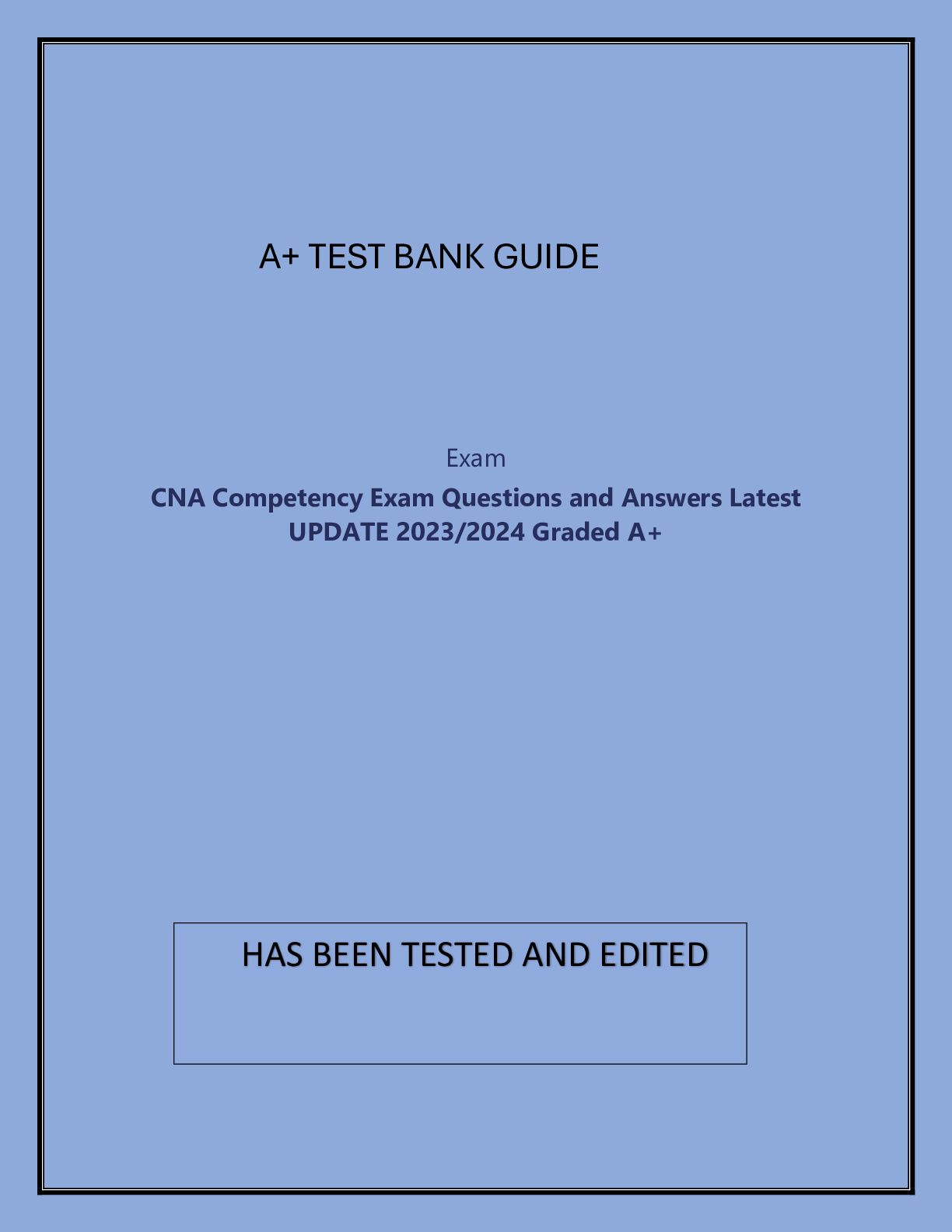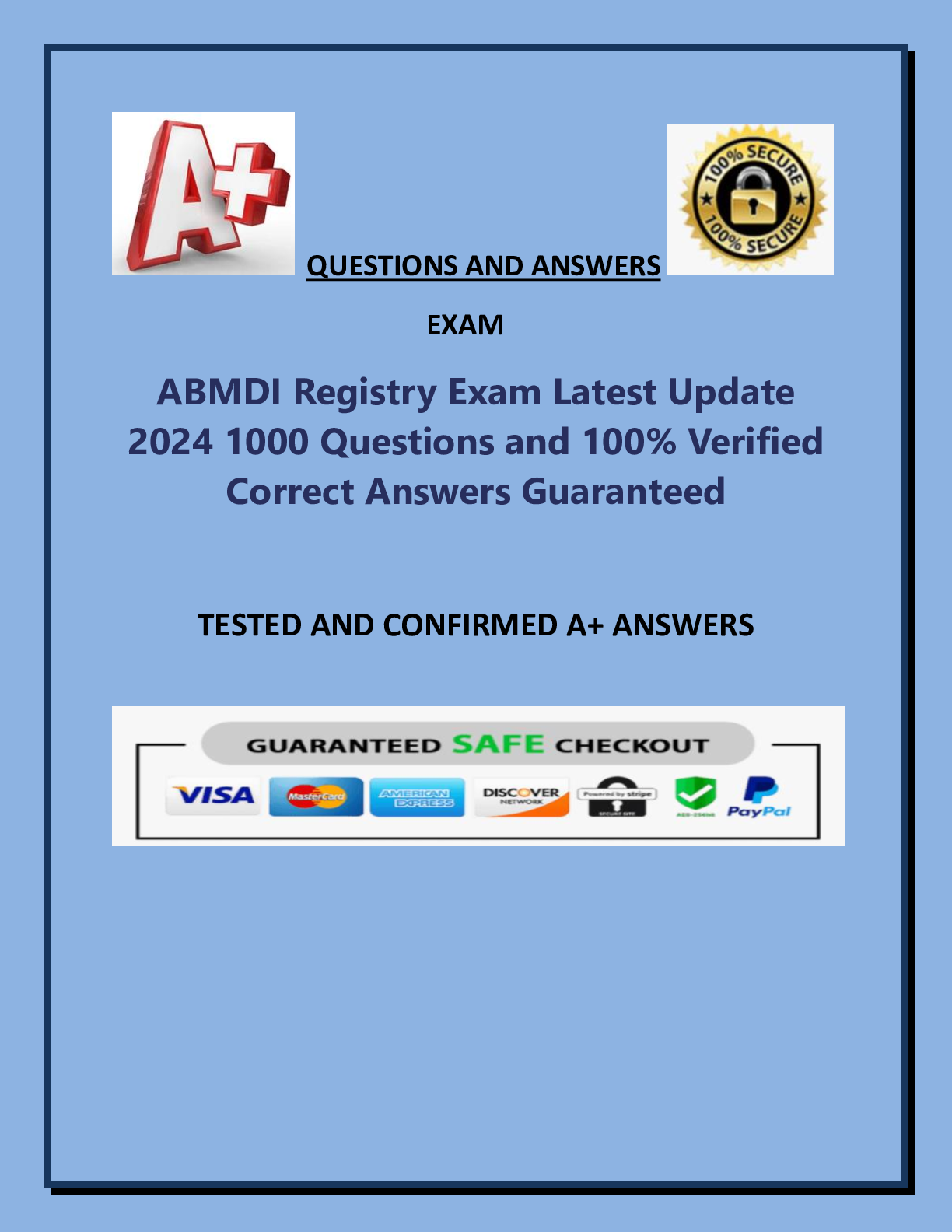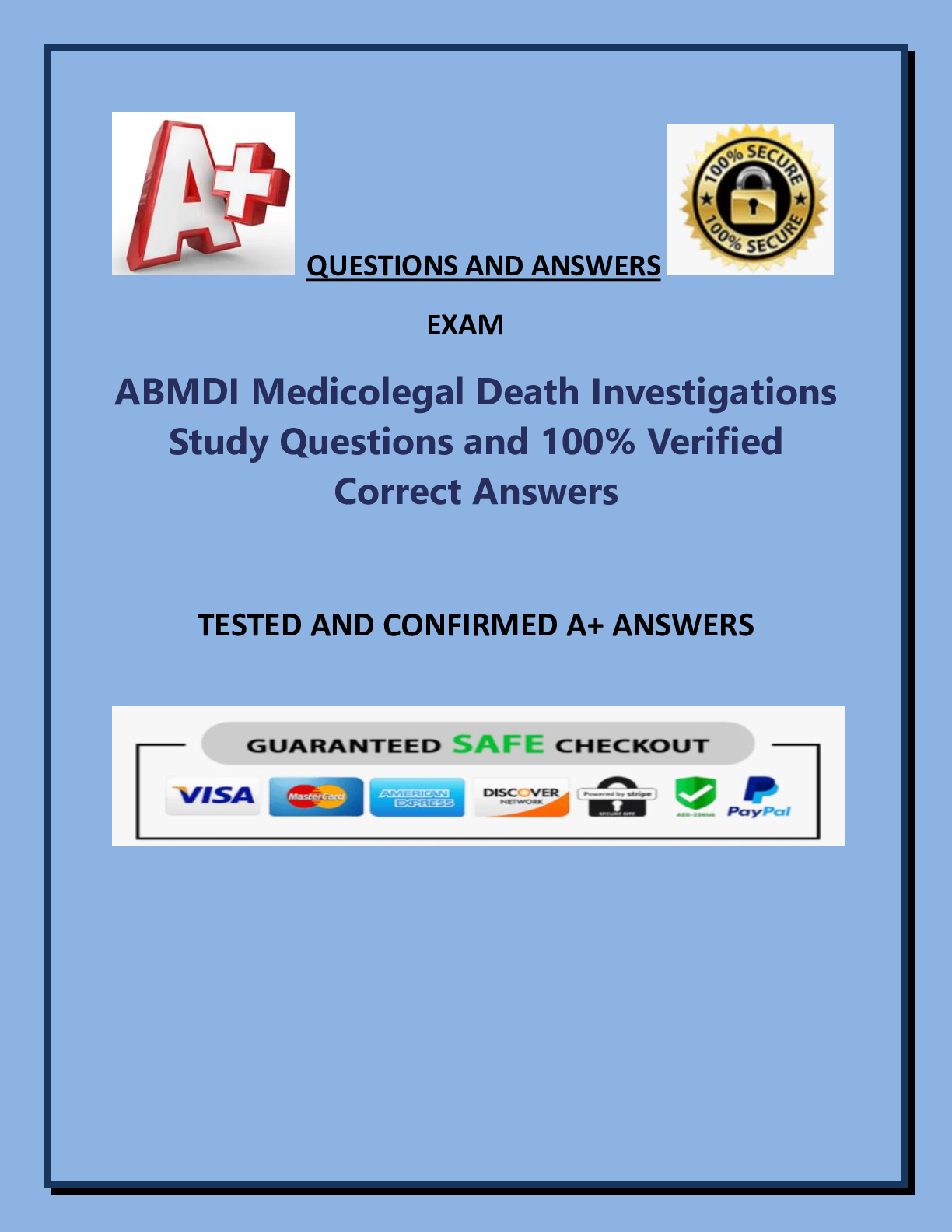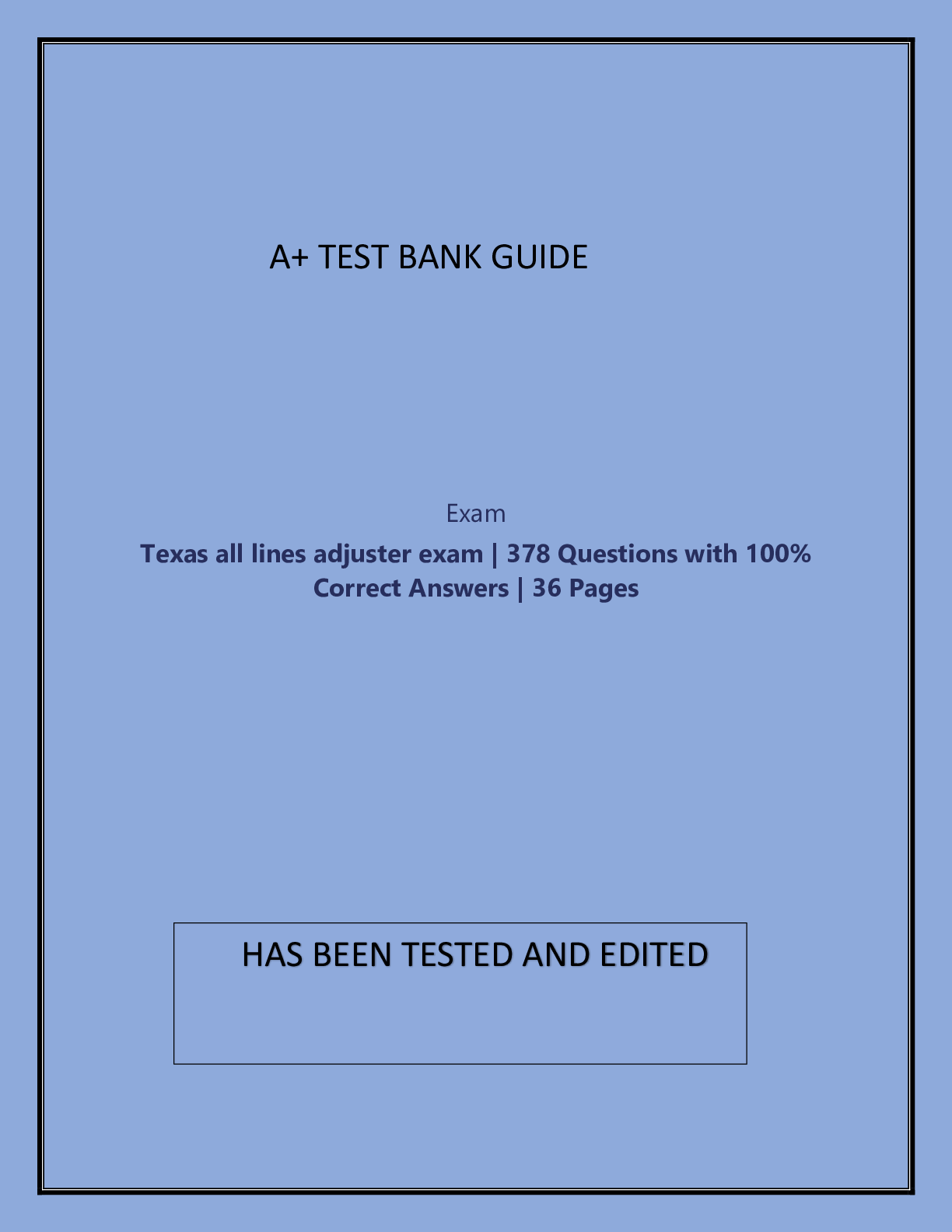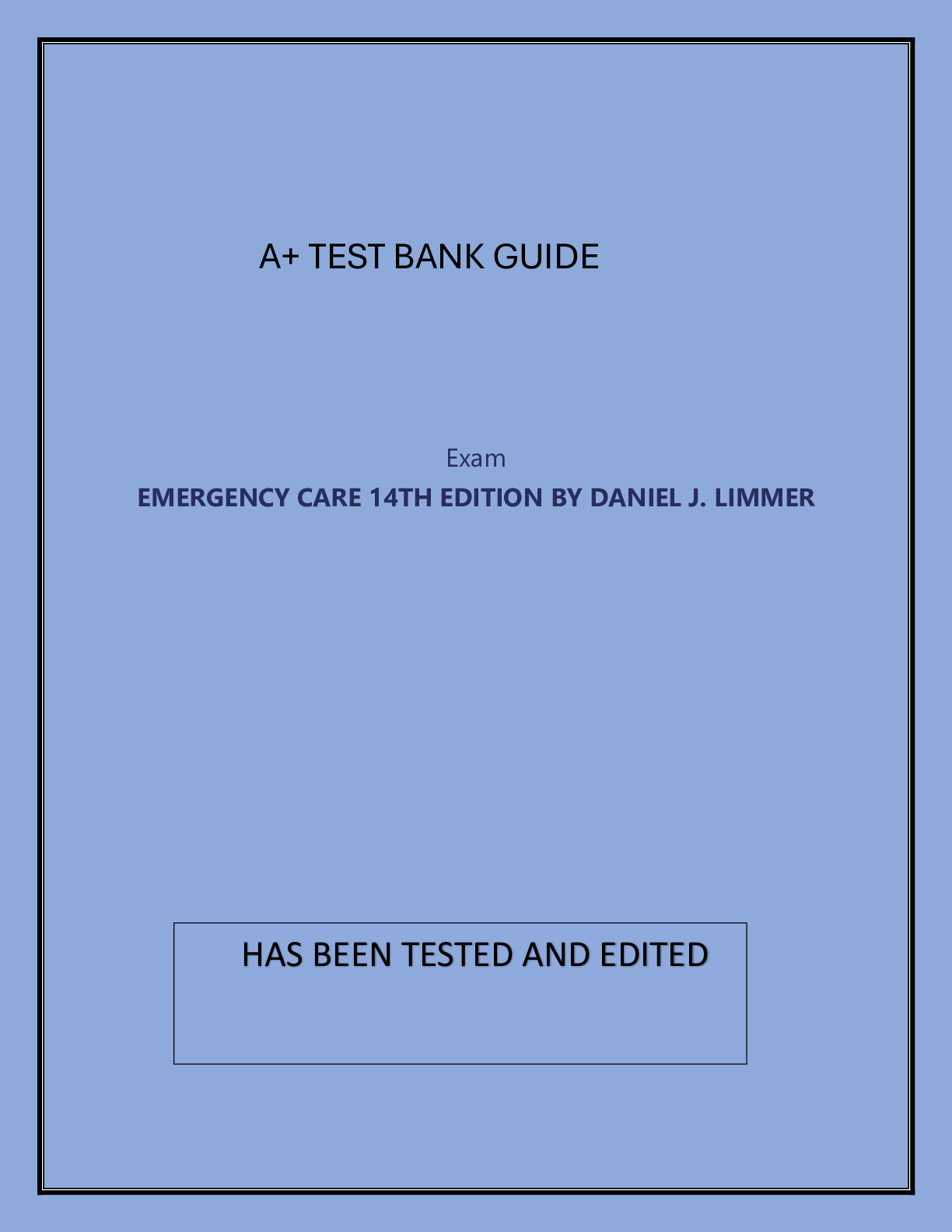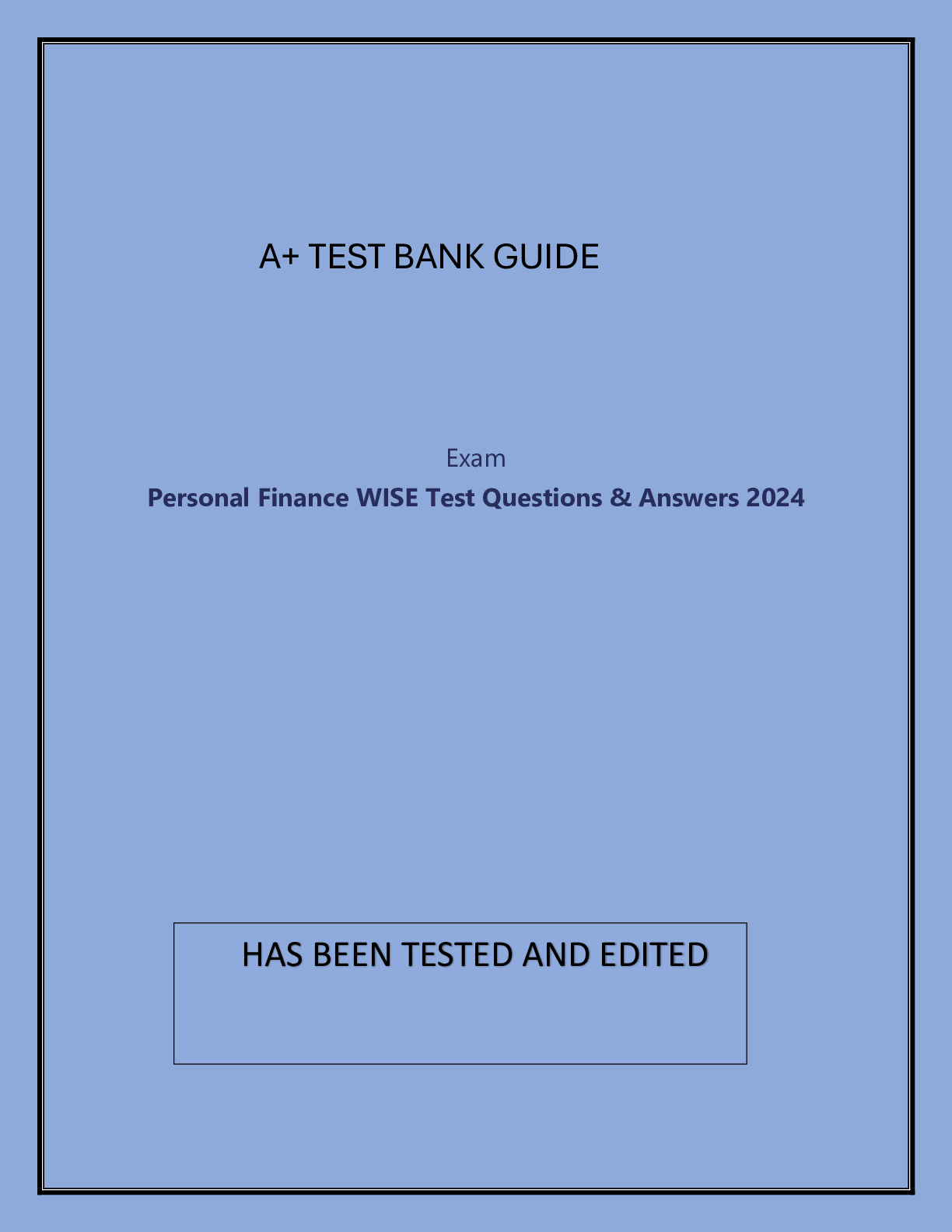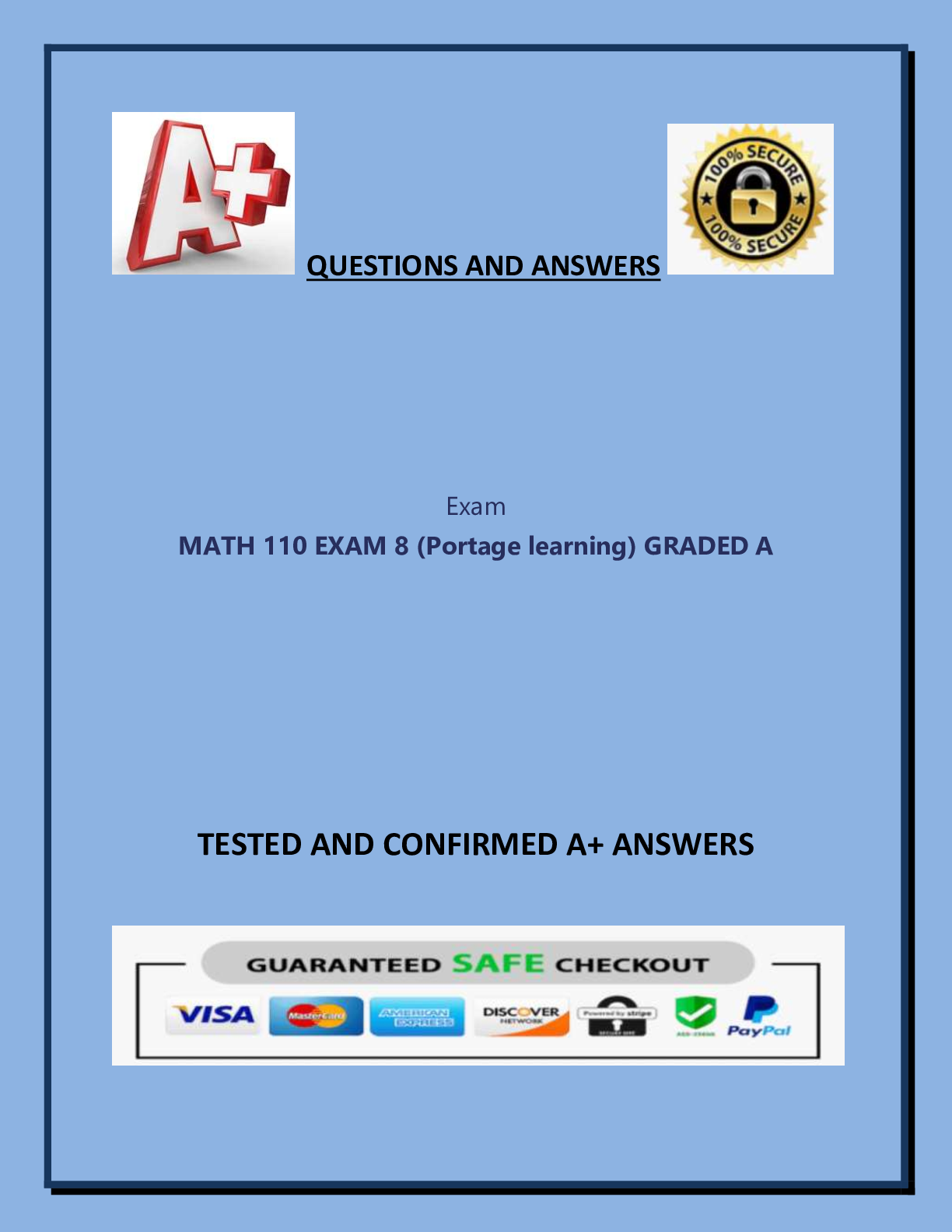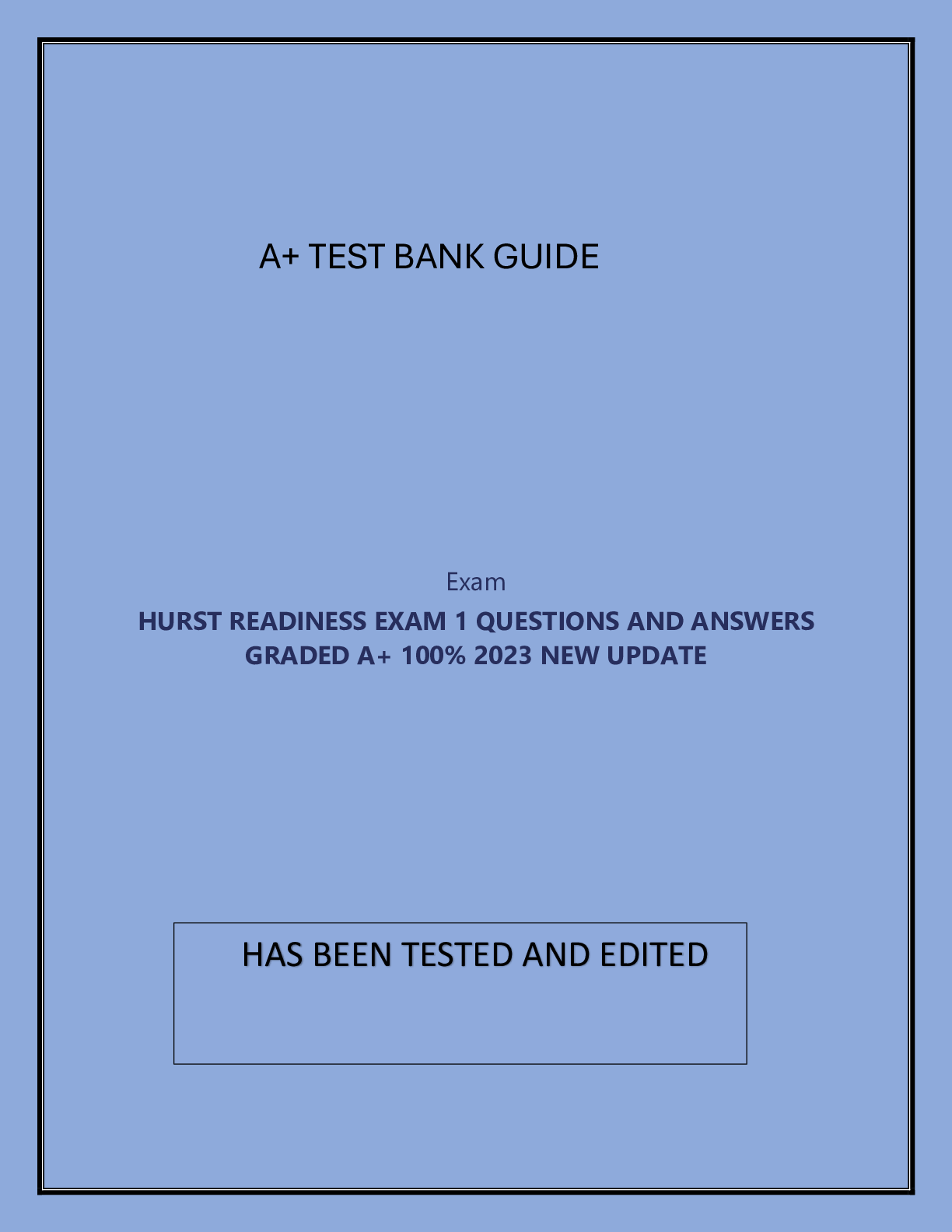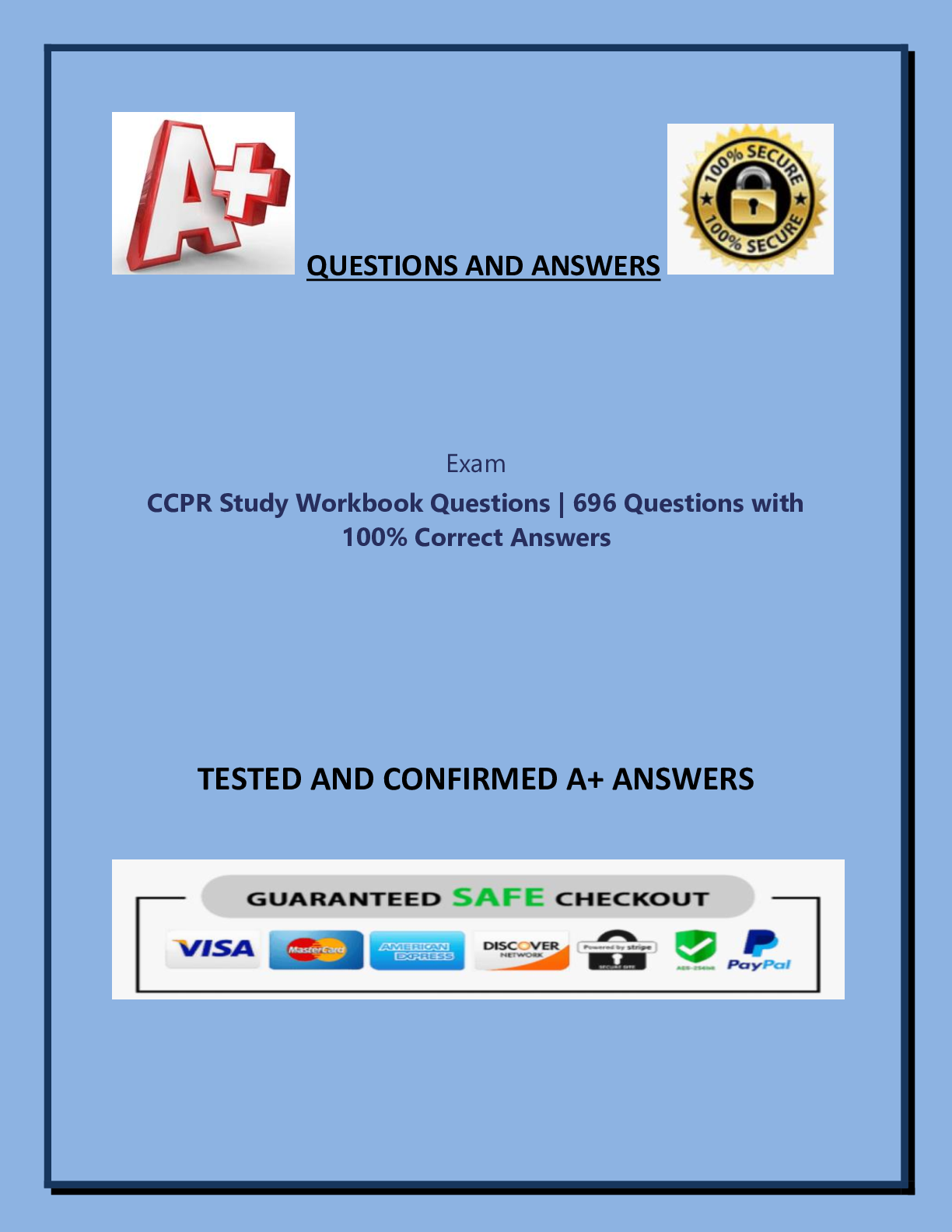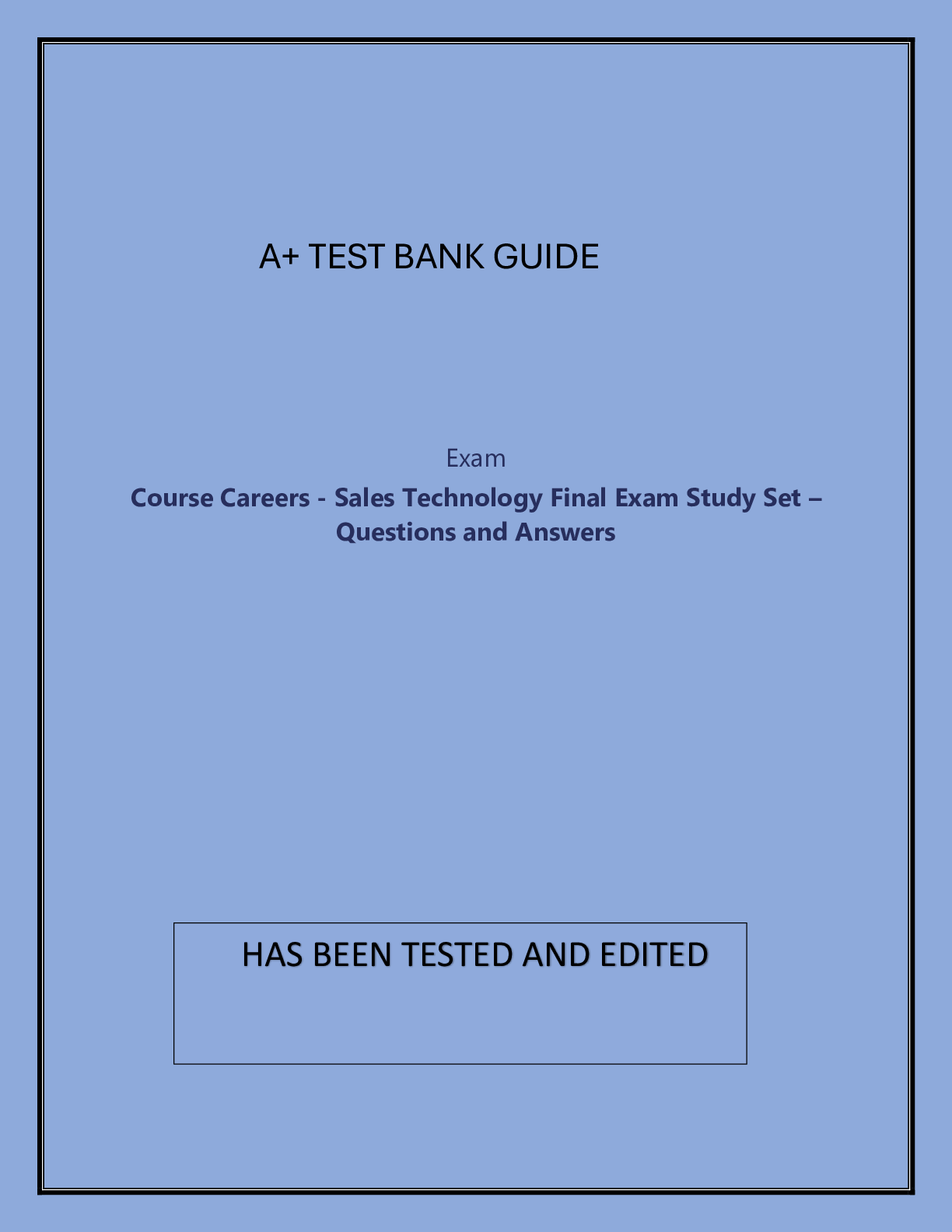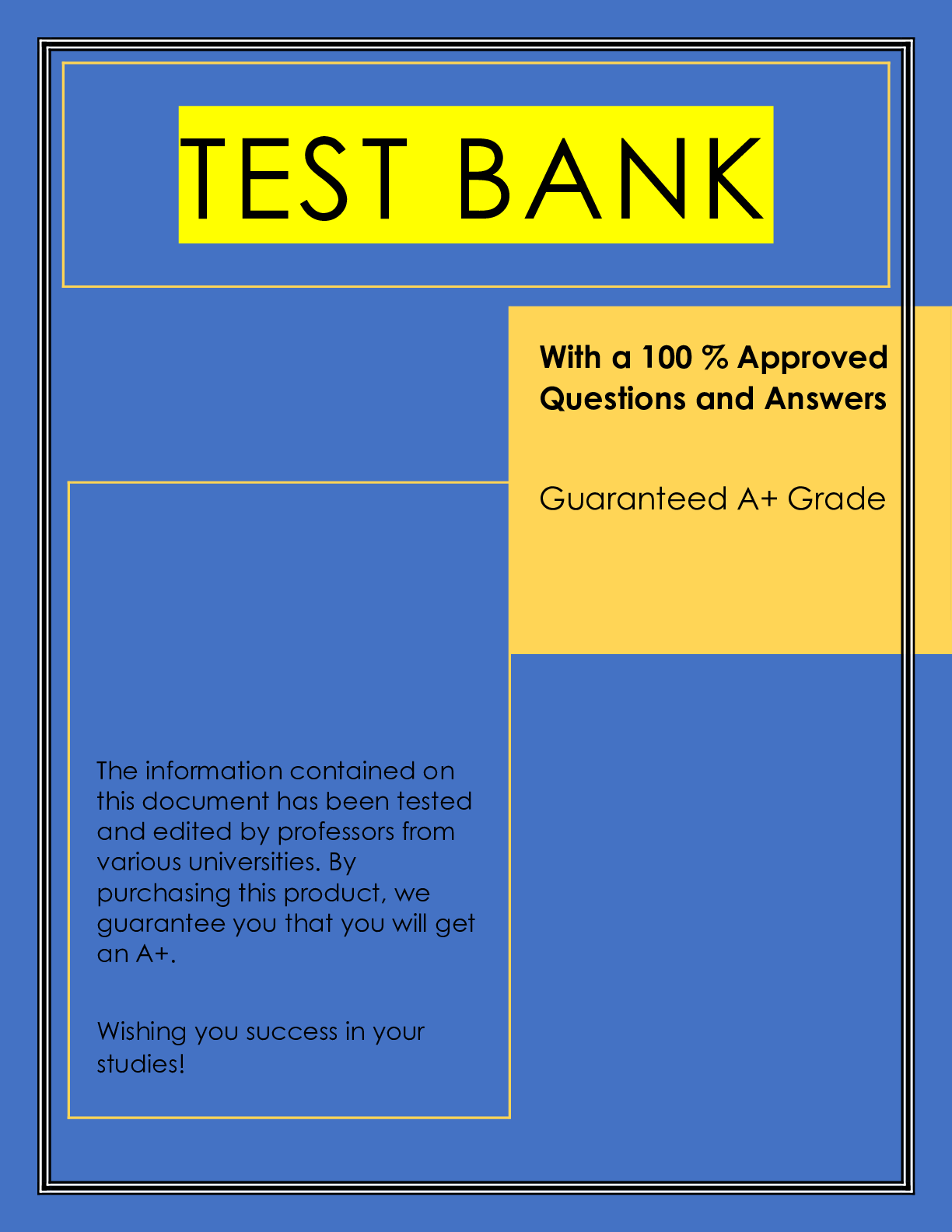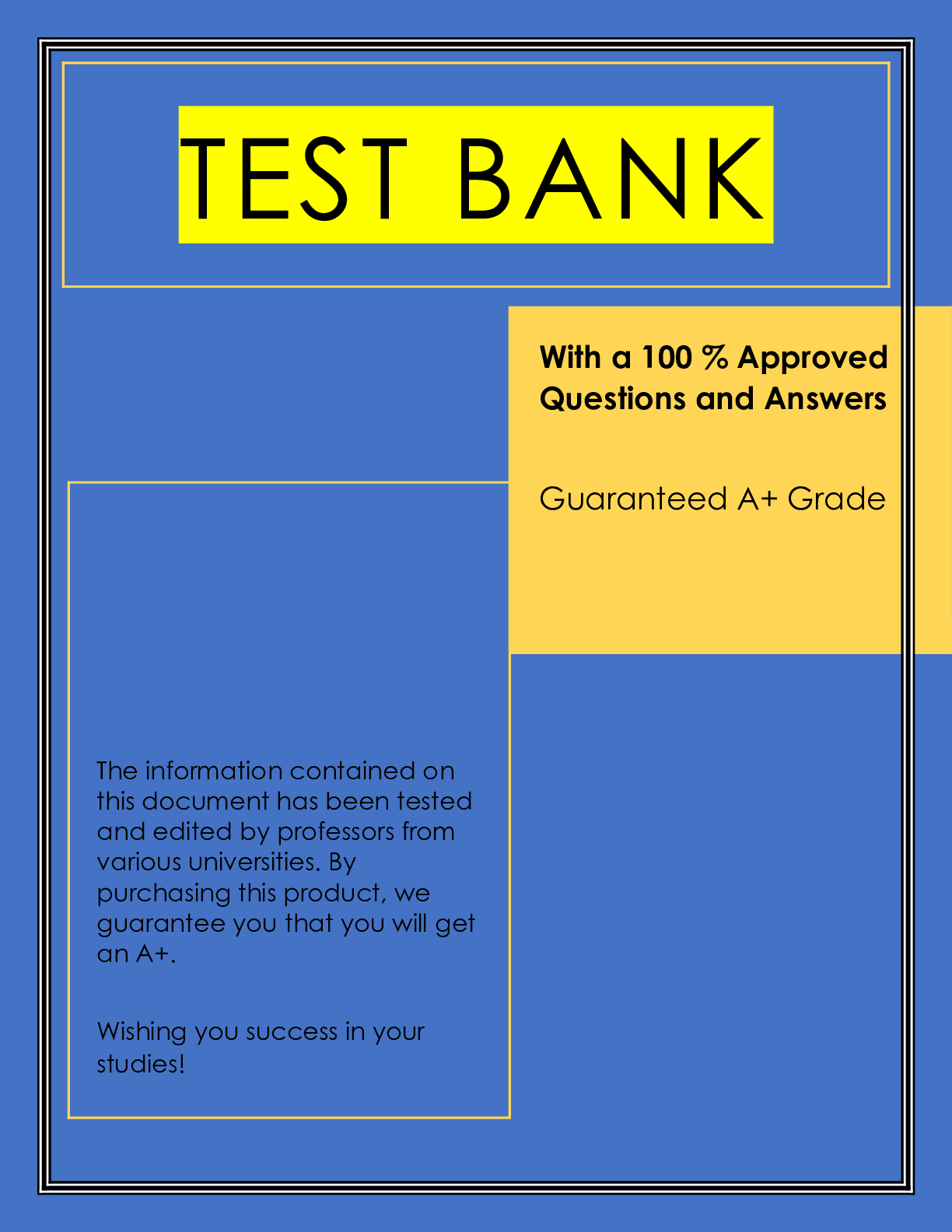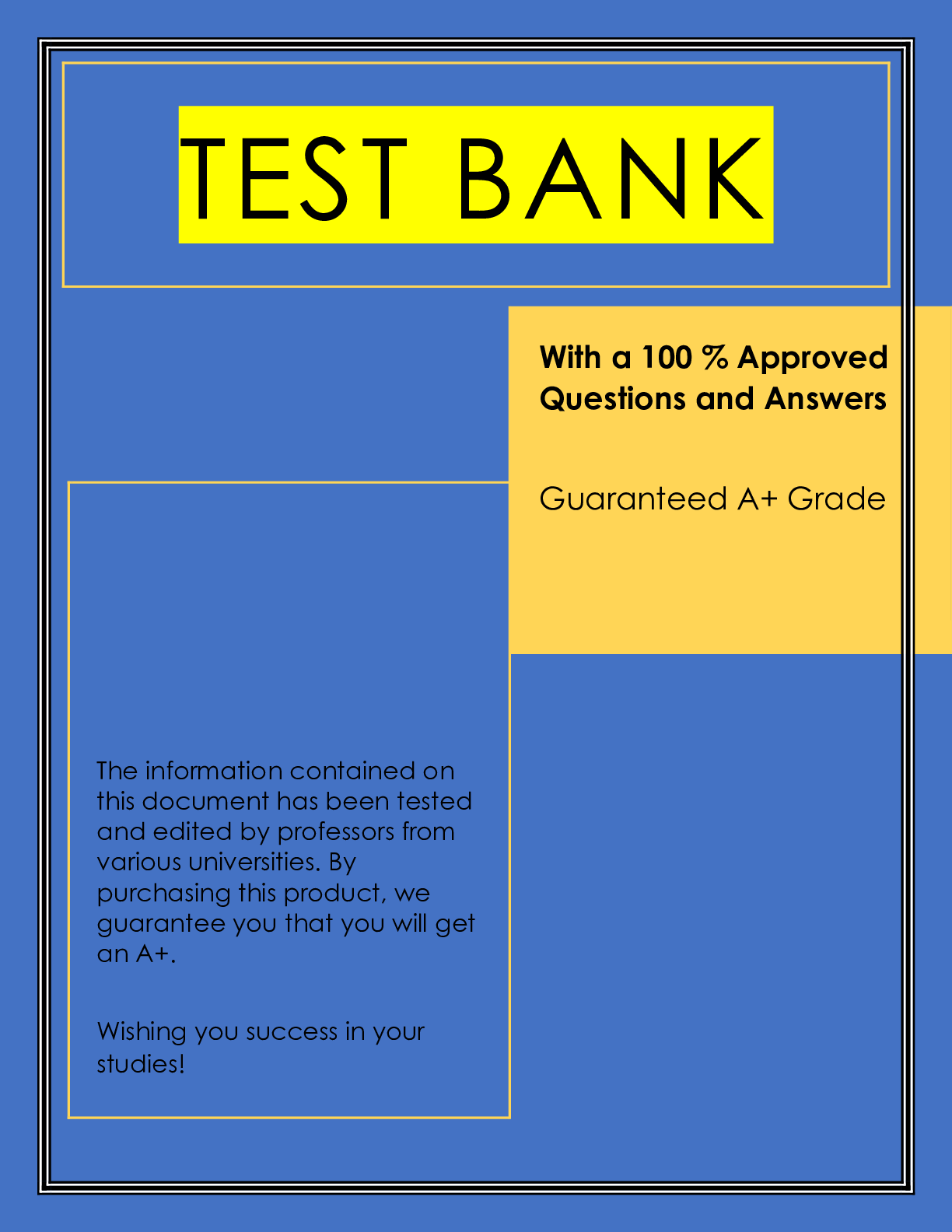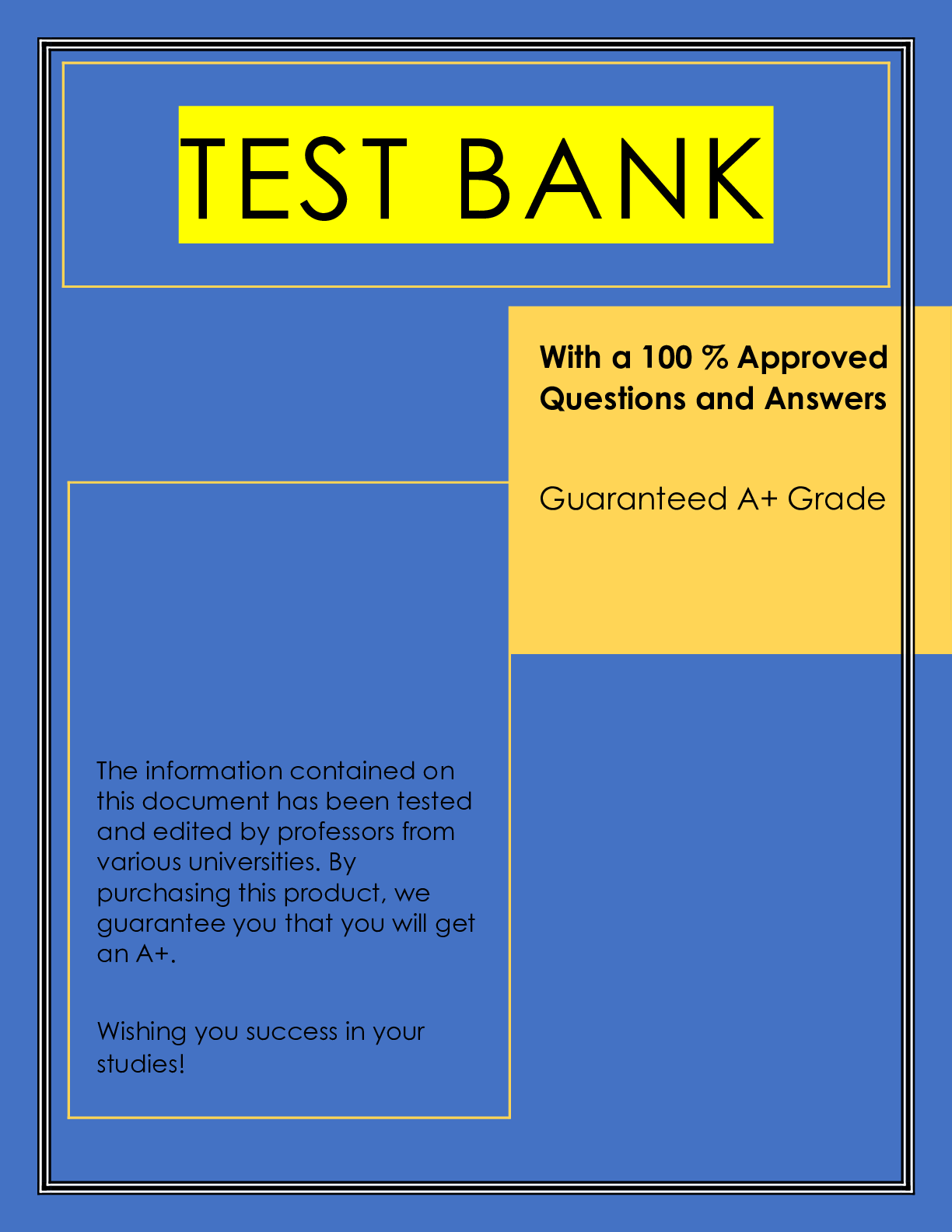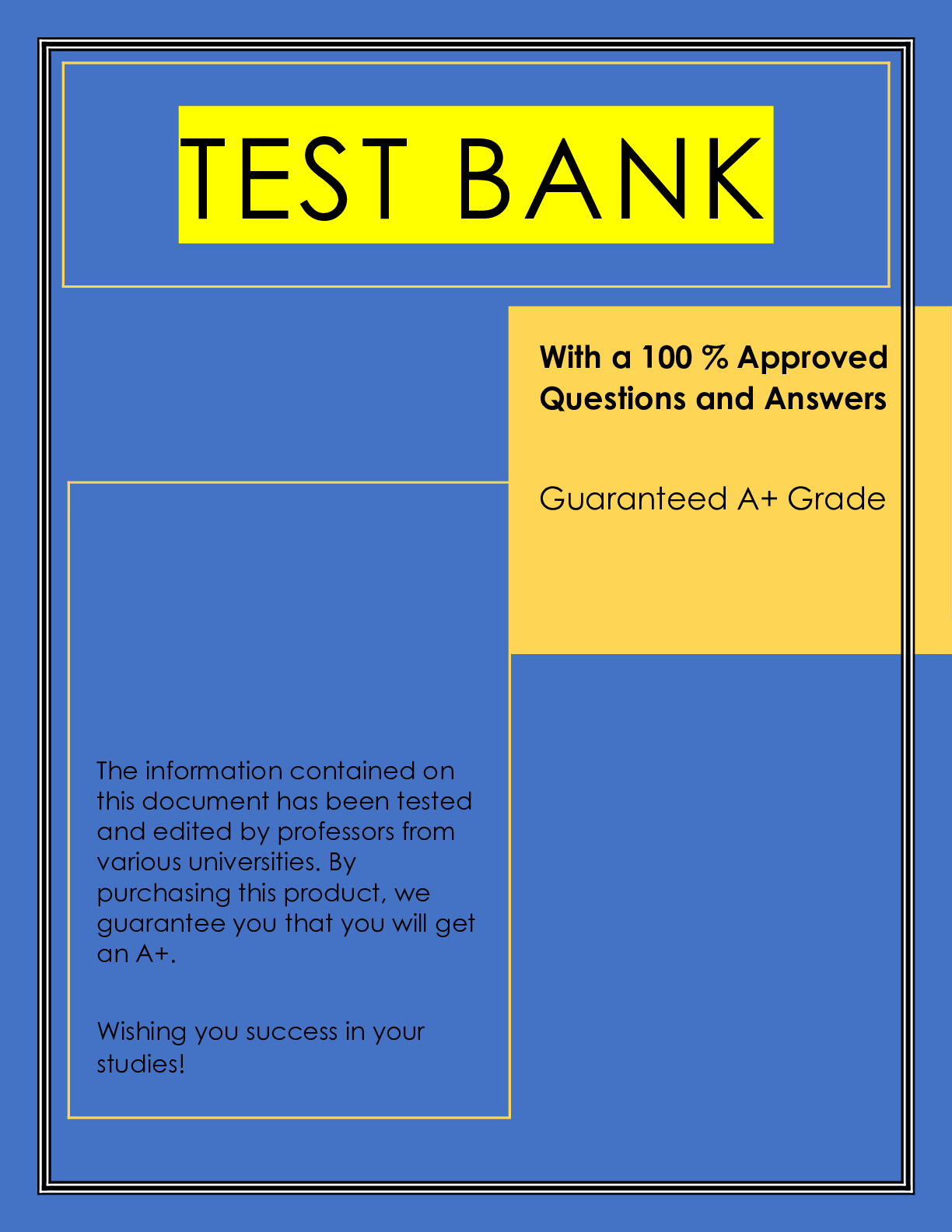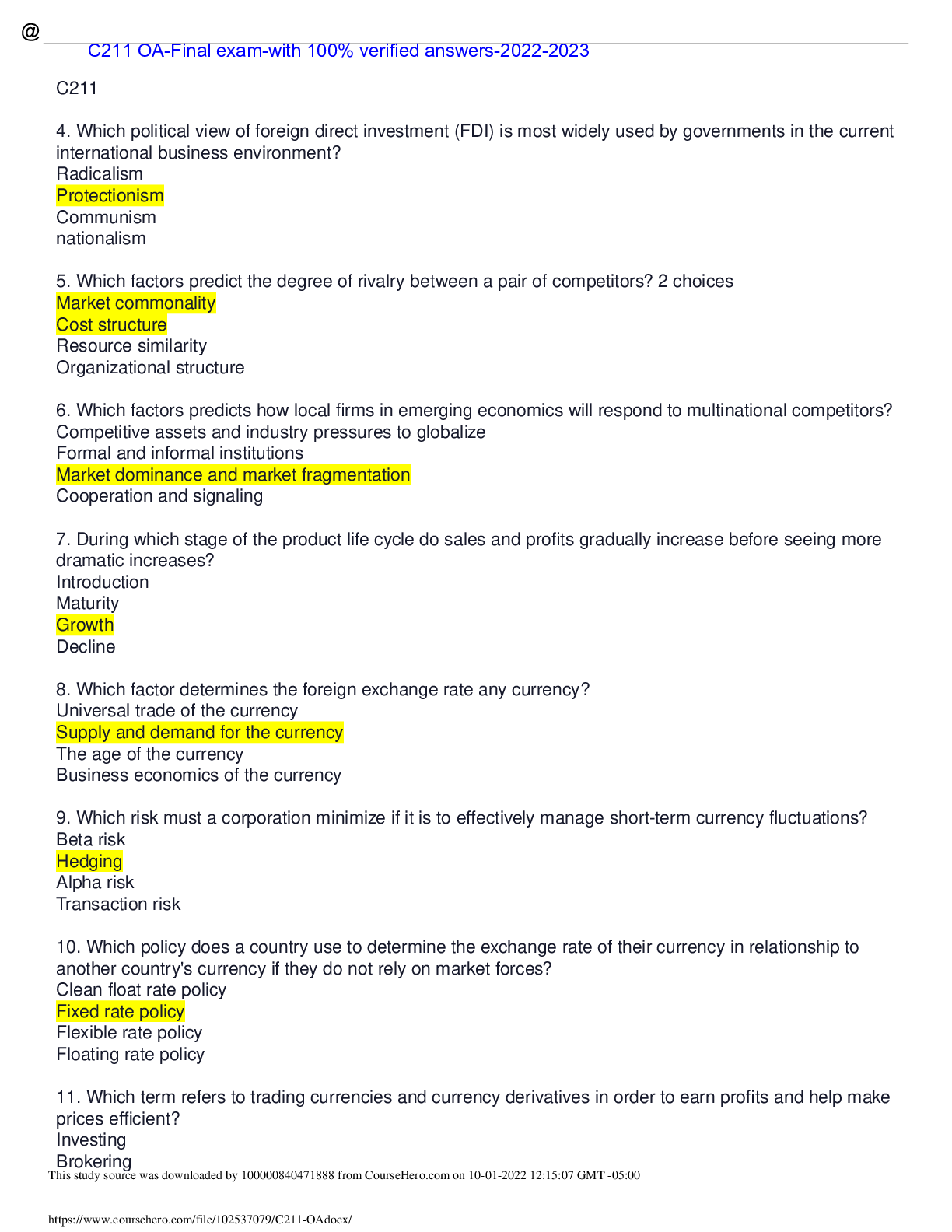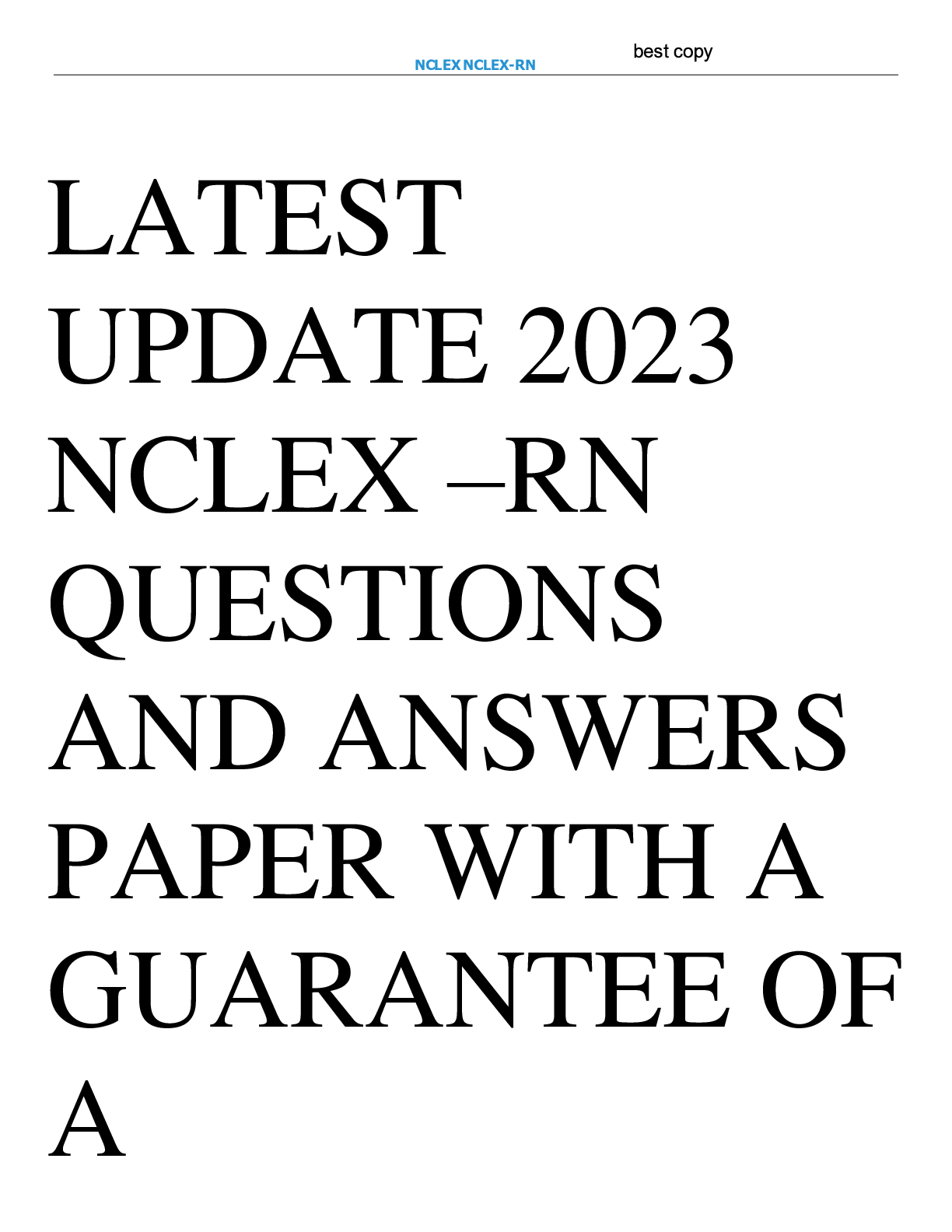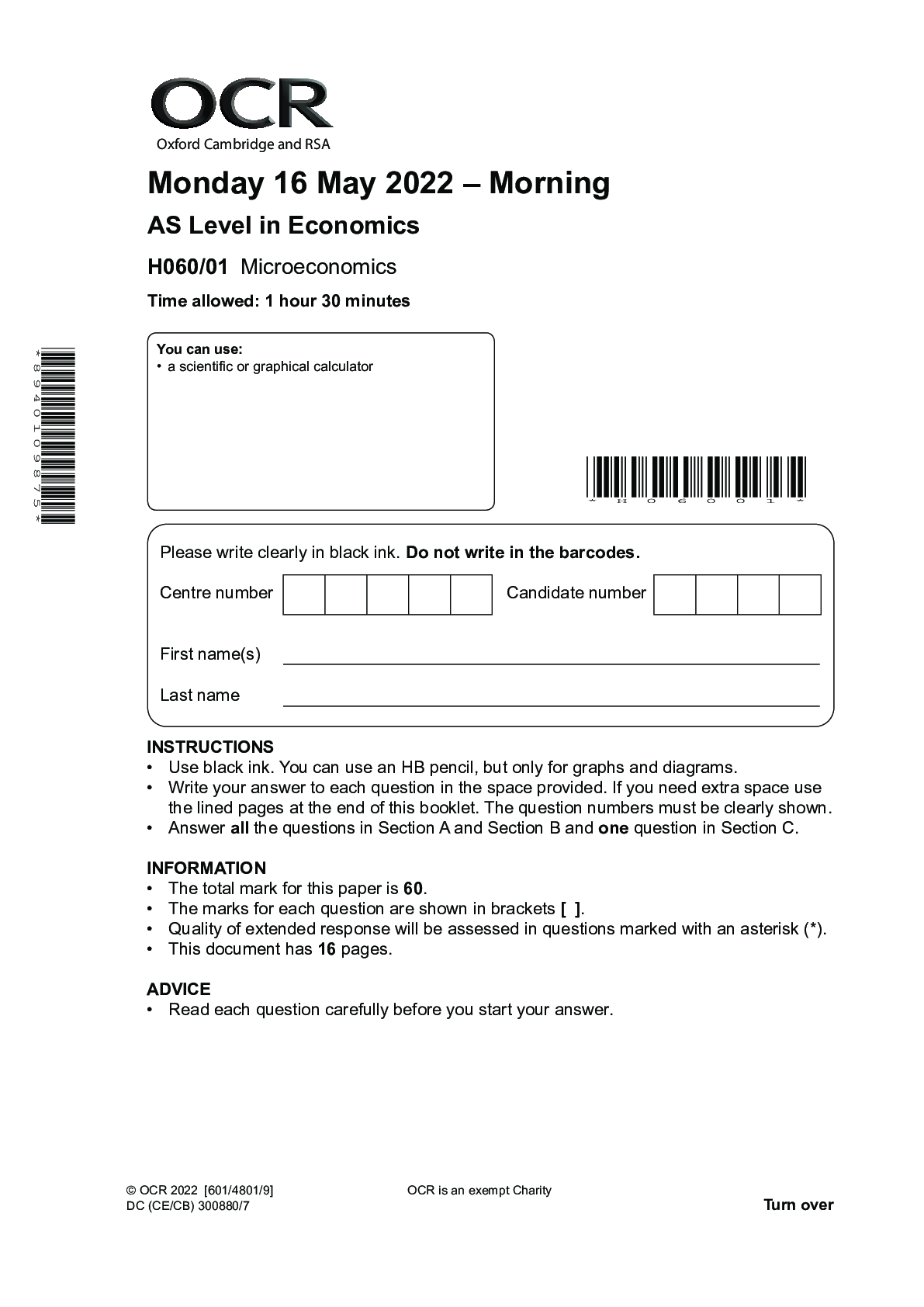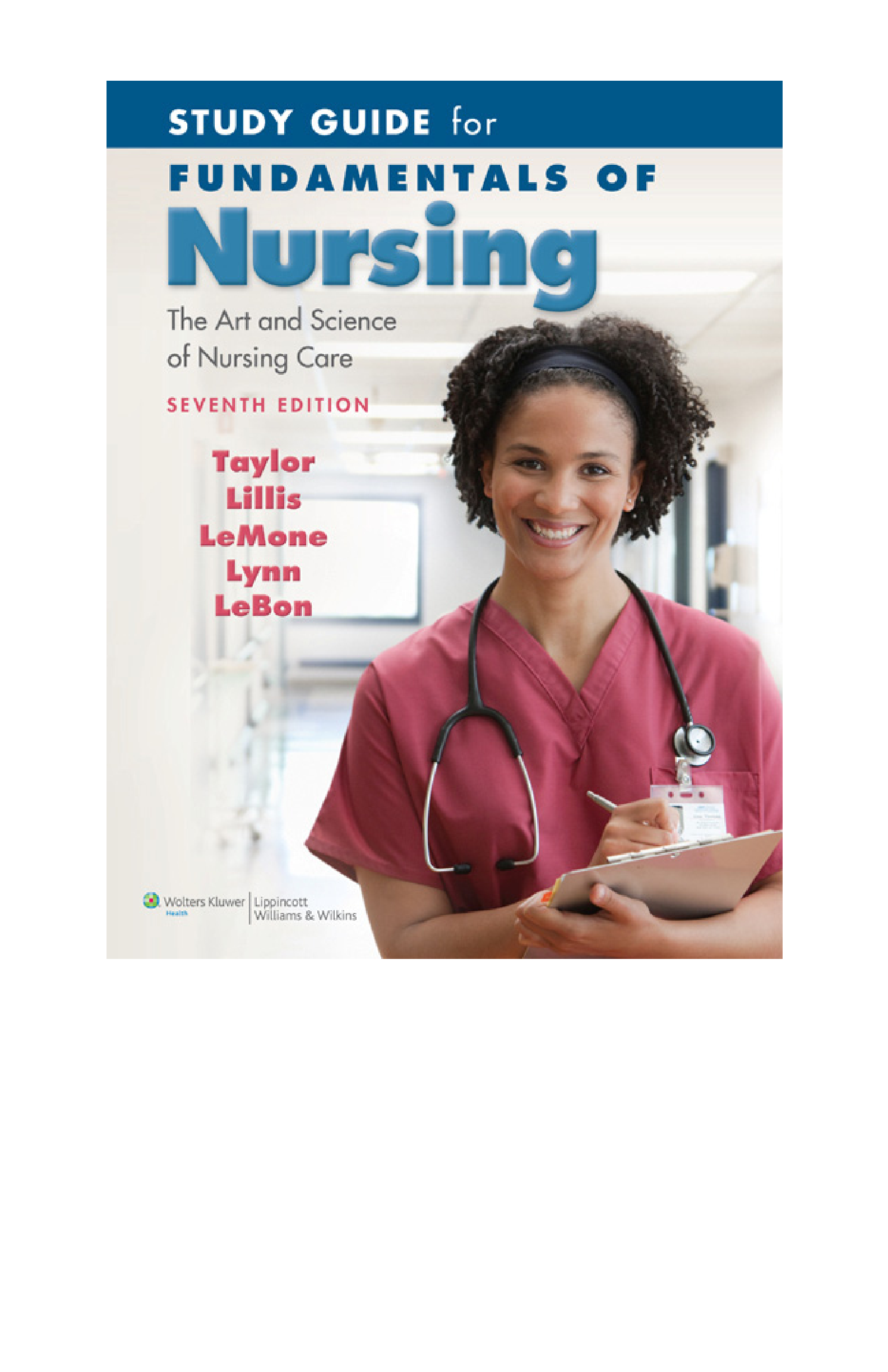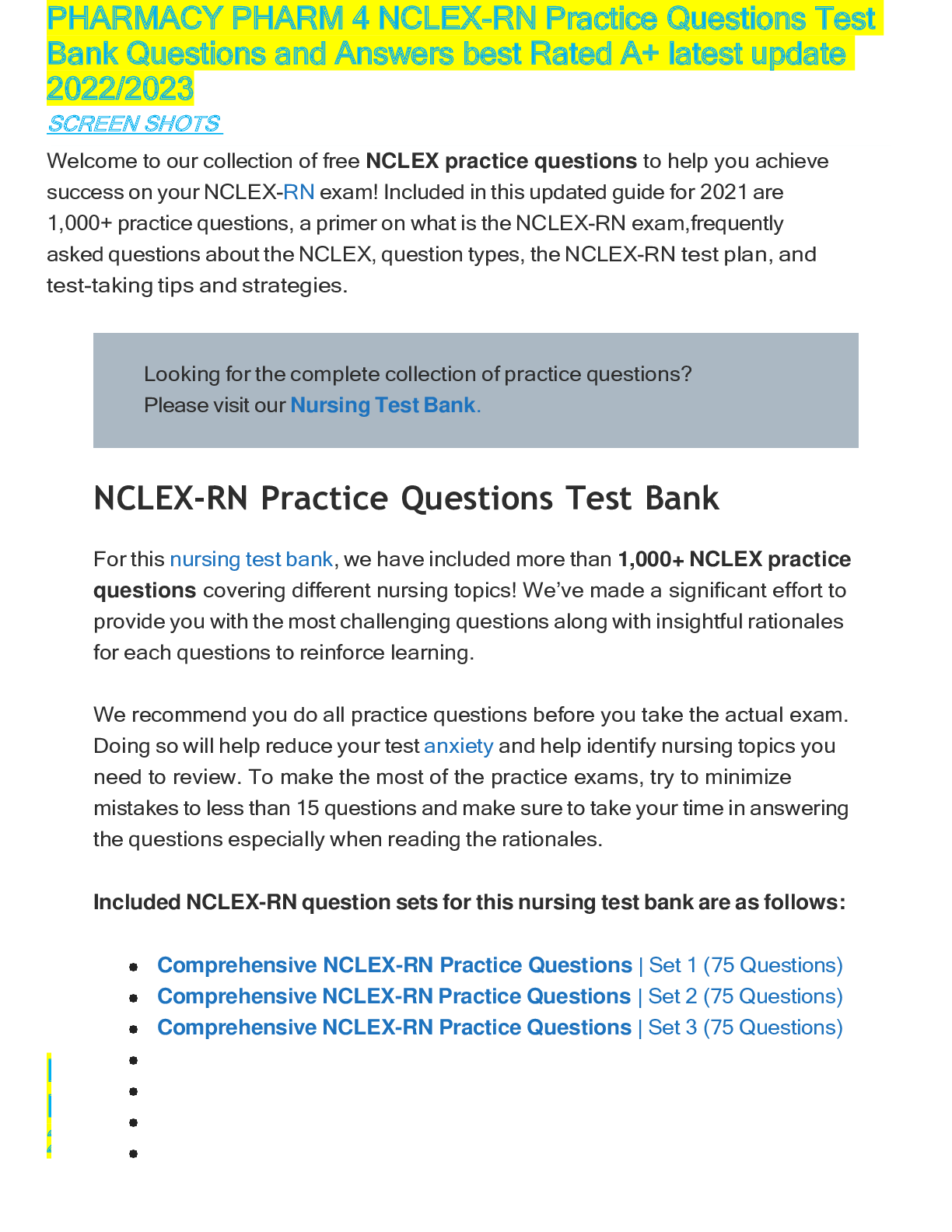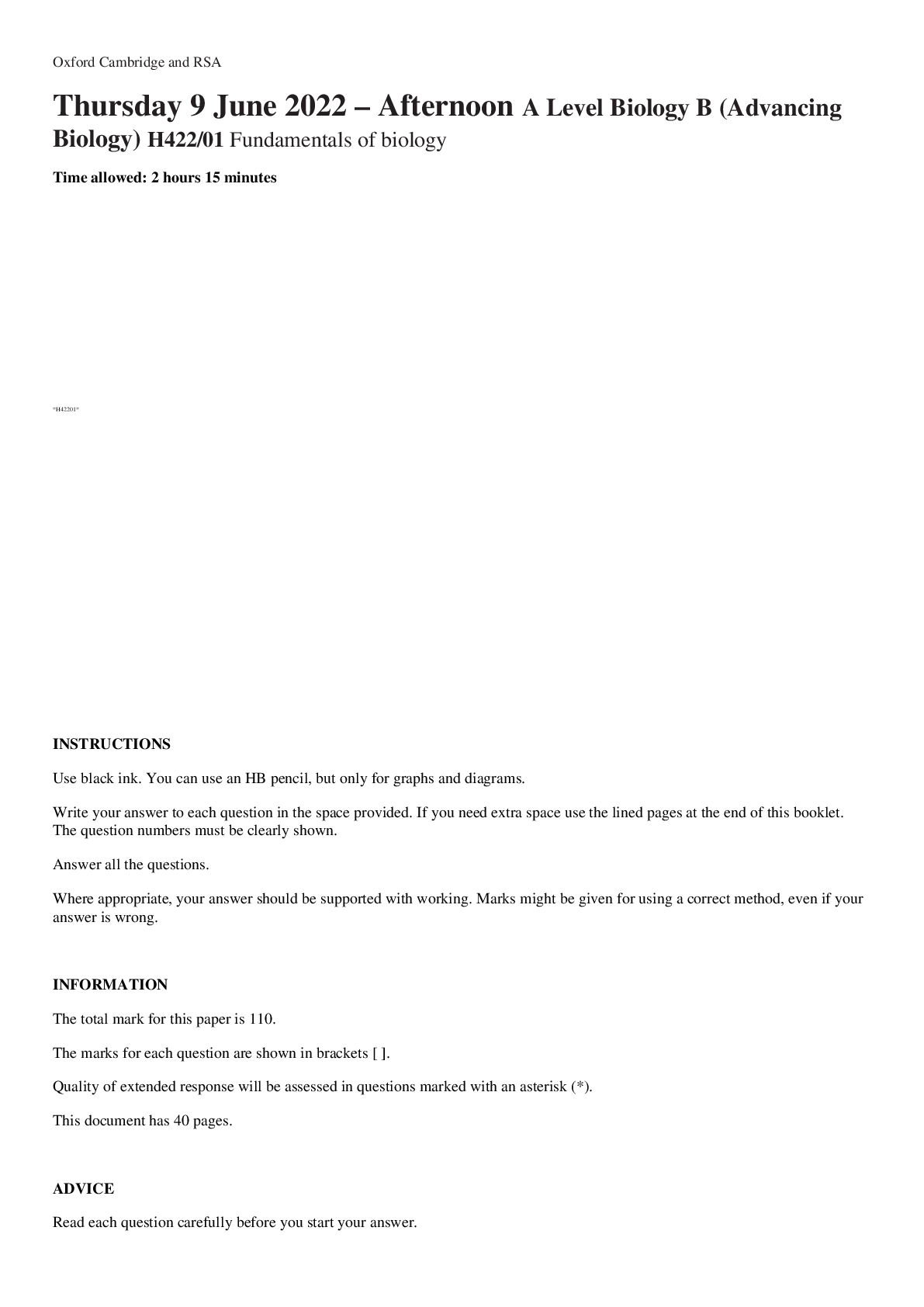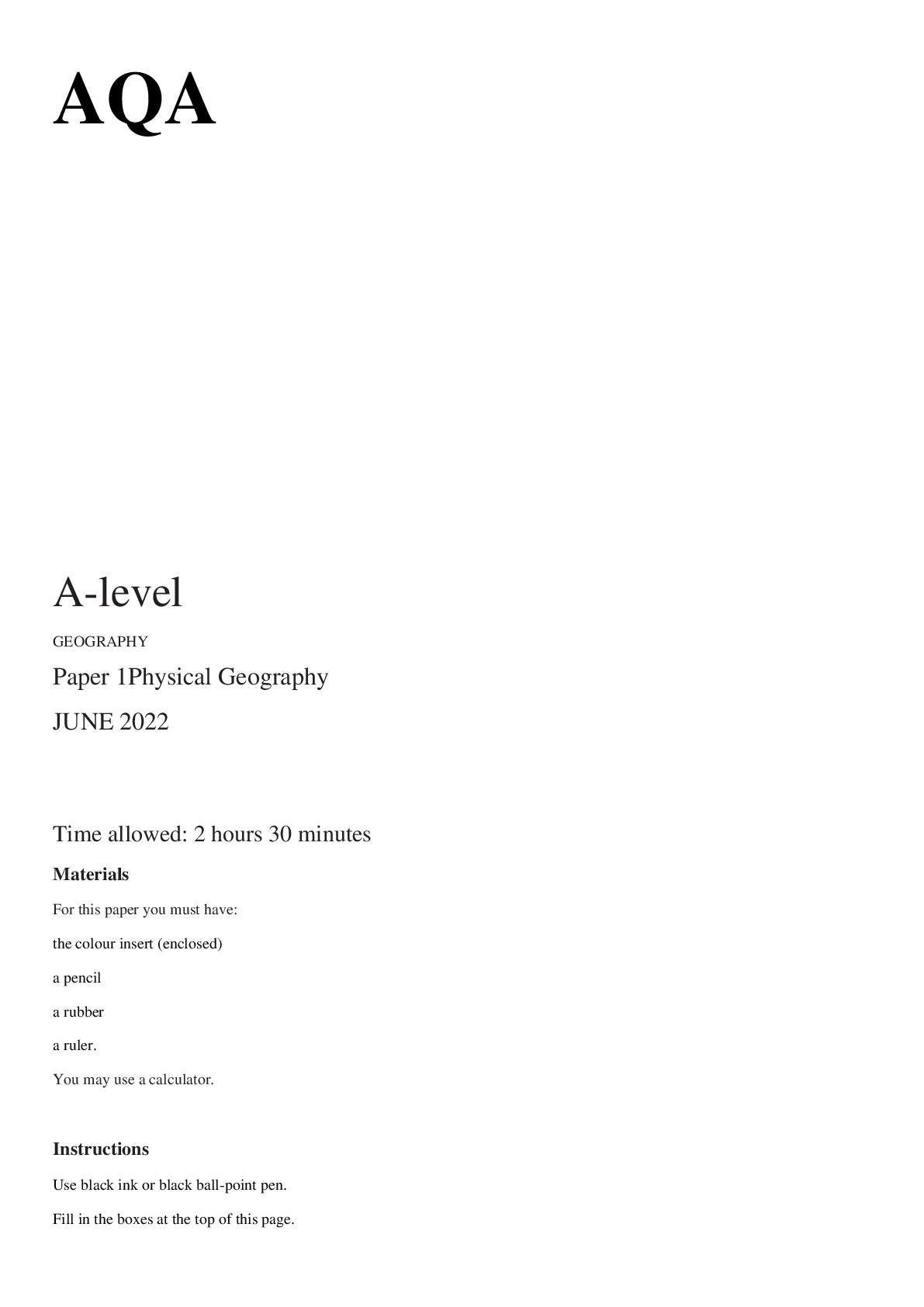*NURSING > A Level Question Paper > NR 509 APEA 3P Exam Week 8 (All)
NR 509 APEA 3P Exam Week 8
Document Content and Description Below
Question 1 A 3 year-old presents with a history of fever and cough over the past 24 hours. Findings on exam reveal: temperature of 102°F, apical heart rate of 157 beats/minute, and respiratory rate... of 40 breaths/minute. Tachypnea in this child is most likely related to Paradoxical respirations. the child's febrile state. Correct the child's age. an airway obstruction. Explanation: In children, heart and respiratory rates will increase with fever. For every degree of fever the respiratory rate will increase 3-4 breaths/minutes and the heart rate will increase 8-10 beats/minute. Question 2 When percussing the lower posterior chest, begin by: standing on the side rather than directly behind the patient. Correct: having the patient lie supine on the examining table. carefully palpating any area the patient has reported pain. using the ball or the ulnar surface of the hand. Explanation: When percussing the lower posterior chest, stand on the side rather than directly behind the patient. This position allows the ability to place the pleximeter finger more firmly on the chest and the plexor is more effective in making a better percussion note. If the patient is lying supine, the posterior chest will not be able to be percussed. Palpating painful areas is not percussion, so is not correct. Using the bony part of the palm at the base of the fingers or the ulnar surface is a technique used to detect tactile fremitus. Question 3 The palpation technique used to assess respiratory expansion of the chest is placing the hands on the eight or tenth ribs posteriorly with the thumbs close to the vertebrae, sliding the hand medially and grasping a small fold of skin between the thumbs. Then: ask the patient to cough and note chest expansion. ask the patient to take a deep breathe and note any delay in expansion during inhalation. Correct have the patient hold his breath for 15 seconds then note chest expansion. have the patient exhale forcefully noting expansion on expiration. Explanation: To assess the respiratory expansion of the chest, the examiner places his hands on the eight or tenth ribs posteriorly with the thumbs close to the vertebrae, slides the hand medially and grasps a small fold of skin between the thumbs then asks the patient to take a deep breath. The thumbs should move evenly away from the vertebrae during inspiration and there should be no delay in expansion. [Show More]
Last updated: 6 months ago
Preview 1 out of 23 pages
Instant download

Instant download
Reviews( 0 )
Document information
Connected school, study & course
About the document
Uploaded On
Nov 02, 2023
Number of pages
23
Written in
Additional information
This document has been written for:
Uploaded
Nov 02, 2023
Downloads
0
Views
48

